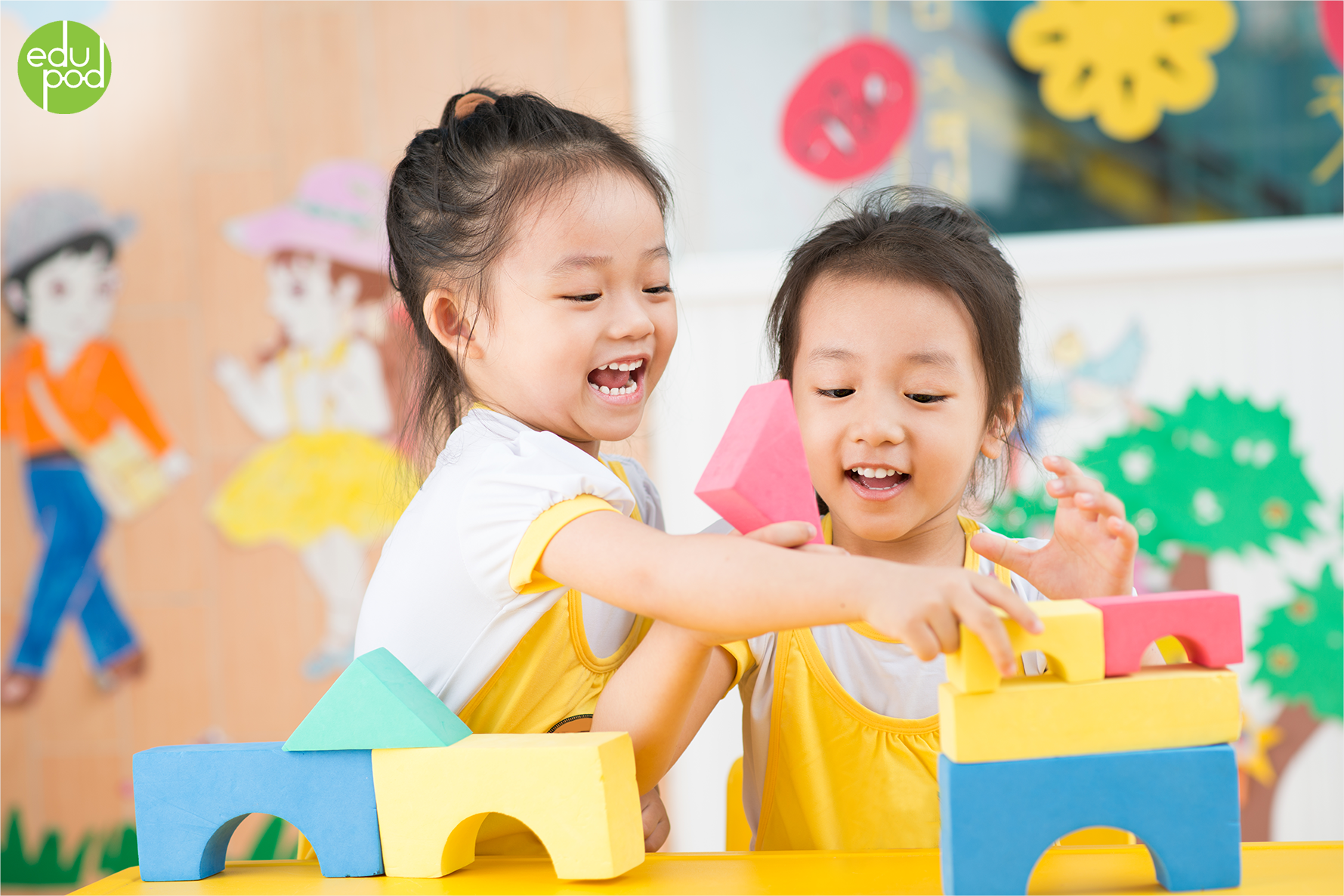
The physical environment that parents put their children in plays an important role in their overall growth and development. Several studies have shown that the things your children grow up seeing around them influences their early learning and creating a safe and conducive space for them is essential to their wellbeing. It may even directly impact their adult years. Want to give your child the best environment to grow in? Here’s a guide to child-friendly design and what you can do to give your children a home they can thrive in.
Child-Friendly Design
1.1. Design Considerations in Children Furniture
Designing furniture for children’s use requires meticulous planning and an attention to detail. Not only does each piece of furniture have to stimulate children’s senses and imagination, but it also needs to fit them and protect their bodies. This means that there should be a balance between scale, proportion, colour, purpose, design, and function in every piece.
Children’s spaces are typically built for different activities that include learning, playing, and living, and the furniture pieces created for their use must complement each other to keep spaces safe for them.
Six attributes to children furniture design
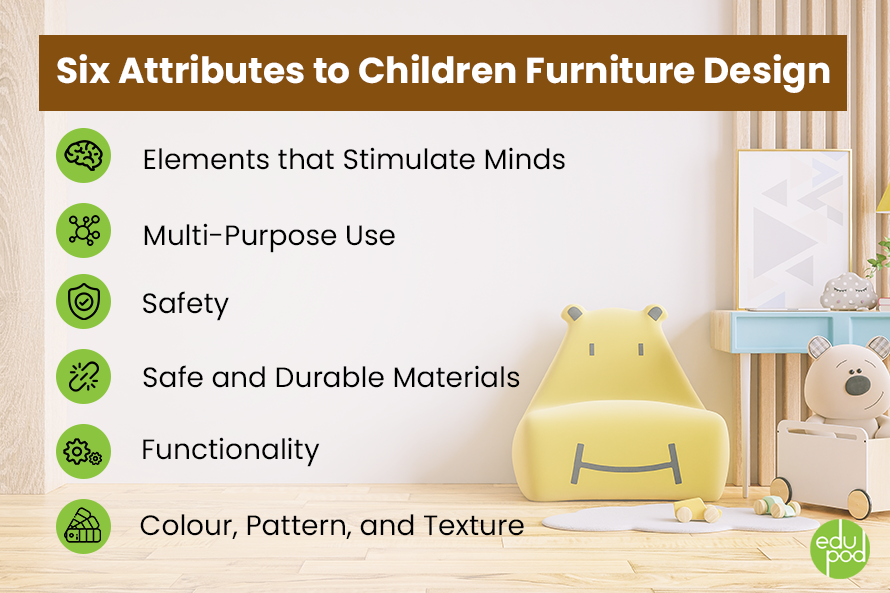
-
Elements that Stimulate Minds
A key part of children’s development involves imaginative play, where children are allowed to experience their surroundings and tap into their imagination to have fun. It nurtures their creativity and curiosity by giving them the opportunity to interpret reality in their own ways. In order to empower children to explore the infinite possibilities of our real world, parents should fill their rooms with kids furniture designed to keep their brains stimulated. The characteristics of such furniture include vibrant colours, creative patterns and shapes, or prints of animated characters. Other items that can be used include pretend play items such as dollhouse sets or fantasy automobiles. These engage their imaginative thinking.
-
Multi-Purpose Use
Adults have different types of furniture for various uses, such as an ergonomic chair for work and study and the couch for lounging and relaxation. However, children don’t understand the difference between each piece and they typically use one type of furniture for all their activities. The design of children’s furniture should complement this way of life, where it serves the child’s every need across play, learn, and rest sessions. It also needs to be safe for use.
-
Space for Movement/p>
In order to develop their motor skills, muscles, engage their ability, and stay healthy, children need to move. The room that they spend most of their time in should allow flexibility and ample space for movement and action. It is important for children’s furniture to be designed to fit into corners or be easily kept away to make room for activities. Additionally, the furniture should be sturdy enough to prevent them from toppling over, contain no sharp edges so that children can move around freely without injuring themselves, and well-balanced chairs that do not fall when children shift around in their seats.
-
Safe and Durable Materials
Children have weak immune systems that make them prone to illnesses even within the safety of your home. To protect them, children’s furniture must be well-constructed with strong, safe, and beautiful materials that are hypoallergenic, non-toxic, and be easy to clean. Porous materials risk harbouring bacteria and germs that cannot be eliminated.
-
Functionality
Children’s furniture should be designed in such a way that it is easy for children to access and use them. From bookshelves to wardrobes, they must all be kept low and easy to read, giving children their independence. This allows children to take pride and gain confidence in being able to do things themselves.
-
Colour, Pattern and Texture
Colours, patterns, and textures are stimulating to children and they work very well together at nurturing their imaginative minds. Designs of regular furniture are usually kept minimal, only occasionally offering a pop of colour for those into interior styles like art deco and eclectic. Children’s furniture, however, often comes combined with different vibrant colours, patterns, and textures to create unique and bright spaces for kids. Strong colours and graphic patterns exude high energy to keep children engaged at all times, which is crucial to their development and growth.
1.2. Creating a Child-Friendly Home Environment

Parents have to make very drastic changes to their home before it is ready to accommodate children. A lot of these modifications involve ensuring safety and providing your children with a physical environment that supports their growth and development. There are plenty of things you can do to make your home child-friendly without compromising your interior design or comfortable adult living space. With a bit of detail and imagination, you can easily create a family-friendly home that caters to everyone’s needs and interests. Here are some tips.
-
Choose Round Corners
Children love running around even in their own homes. In order to ensure their safety, avoid buying furniture with sharp edges that can cause serious injury if your children collide into them. Instead, opt for soft and plush furniture pieces with round edges, or purchase corner guards to cover up these edges. Apart from specially designed children’s furniture, there are also many regular furniture such as round coffee tables that are suitable for child-friendly homes.
-
Writable Walls
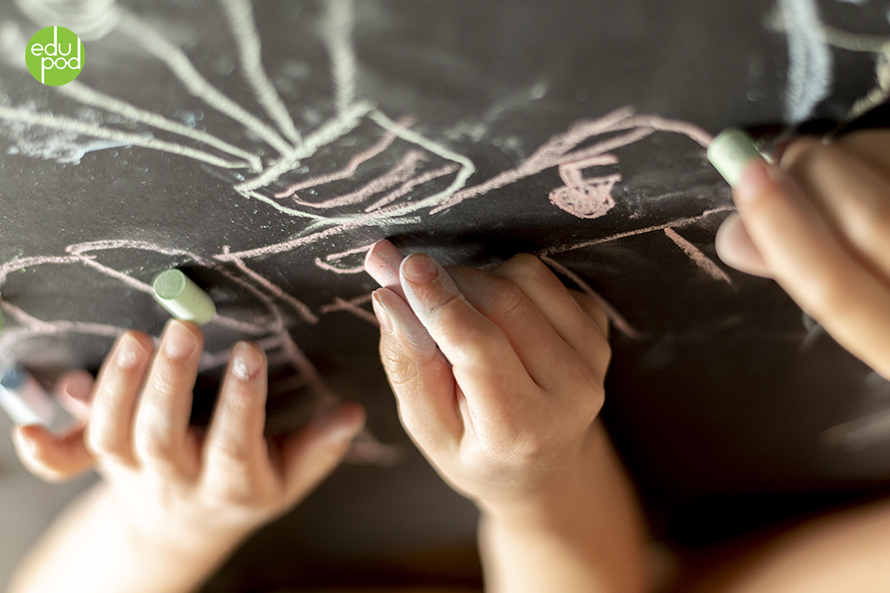
Scribbling and doodling on surfaces is something that children will always enjoy doing, and at times, it is impossible to stop them. Parents can cover up walls with washable paint that can be easily cleaned after, or replace the walls with chalkboards, whiteboards, mirrors or glass to indulge your children without ruining your walls.
-
Easy-to-Clean Floors
Floors are susceptible to abuse from dirty shoes, spillage, the dragging of furniture and dropping of toys. If you want to keep them in pristine condition, you’ll need to avoid flooring materials that are difficult to clean and maintain. Opt for non-porous and highly durable surfaces such as vinyl, laminate, or tiles. These will remain in good condition with proper maintenance even after many years.
-
Stain-Free Furniture
Children can make a mess at home and destroy all types of furniture with spills and scribbles. To prevent such damages and protect your furniture, choose stain-free pieces such as leather, plastic or metal. They look good, can be easily cleaned even after being vandalised, and they don’t absorb spills.
-
High and Low Cupboards
Cabinets with both high and low compartments allow you to store certain things away from children and their items closer to the ground for their easy access. These cupboards are great for families as they serve two different purposes all at once.
-
Designated Children Rooms
Setting up a designated children's room with kid’s furniture and only allowing your children to engage in play and/or learning activities in that room can be a good way to keep the mess out of sight and protect your children.
You can build a home playground in this room with playground equipment, toys such as STEM kits, doll sets, or domino sets, and more. You can even decorate the room to your children’s style and furnish it with safe, functional kids furniture without ruining the aesthetics of your home.
Only letting your children engage in activities in one room also keeps them safe as other parts of your home, such as your home office and kitchen, may contain dangerous items that could harm them. This arrangement is helpful for families who wish to make their lives more convenient.
1.4. How Interior Design Elements Impact Children’s Learning, Happiness, Comfort, and Growth
Many parents don’t understand how the physical environment can affect their children's growth, and often design their homes without taking into account the way interior design elements are put together.
From noise and housing quality to the interior design, everything has a significant impact on your children’s academic achievement, cognitive development, and social and emotional development. Poor physical environments can be a source of stress, which may affect them till adulthood. Children need healthy and safe spaces in order to grow healthily and develop stronger skills. Learn how interior design elements impact children’s learning, happiness, comfort, and growth, and how you can change things at home to give your children a better place to live in.
-
Light
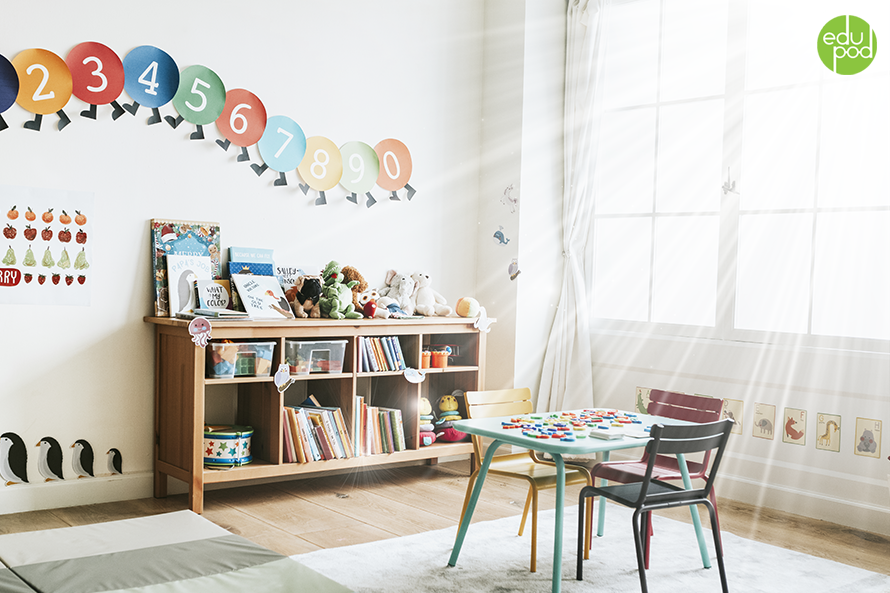
In addition to illuminating spaces to help us see better, light also has psychological effects on children that have been shown to impact their ability to learn, their emotions, and cognitive abilities. Research shows that natural light positively affects children’s senses as they make spaces appear brighter, much friendlier, and joyful. It can even lead to an increase in appetites.
Both natural and artificial light influence children’s moods and sleep patterns. Bright lights boost mood and concentration and help prevent diseases and circadian rhythm disorders. Studies have also shown that bright light can foster the formation of new synapses, which enhances children’s ability to learn. On the other hand, a lack of light or bad lighting not only affects eyesight, it is also associated with headaches, fatigue, and even depression.
-
Colours
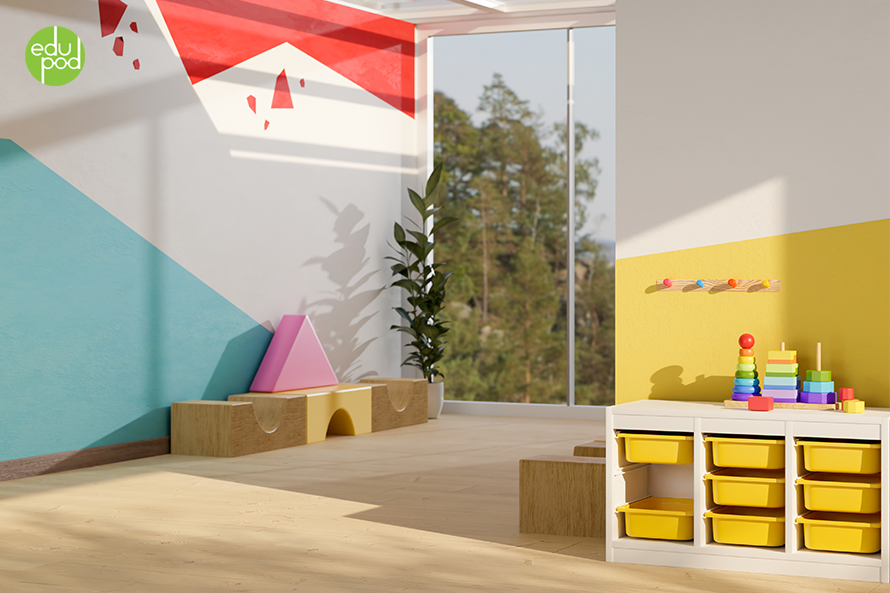
Colours have a significant impact on human behaviour and emotions, and its effect is even more distinct in children. Children tend to be more sensitive to colours, and their behaviour may change depending on the colours they see around them. Interior cannot have absence of colour as that will lead to a lack of stimuli, which may cause anxiousness, sleeplessness, excessive emotional reaction, and loss of concentration.
Certain colours evoke excitement, some are calming, while others give a sense of security. Every item in your kid’s room, from the furniture colour to the clothes they wear, can influence them and trigger their imagination. For example, red is an intense colour that can make one feel in danger, anxious, passionate, or excited. Using it around highly energetic children may disrupt their learning and allow for more restless and active behaviour. Blue, purple, and green are colours that are more suitable for them.
Parents need to understand colour psychology, learn how to match them to their children’s personalities and balance them out to create conducive environments.
-
Nature
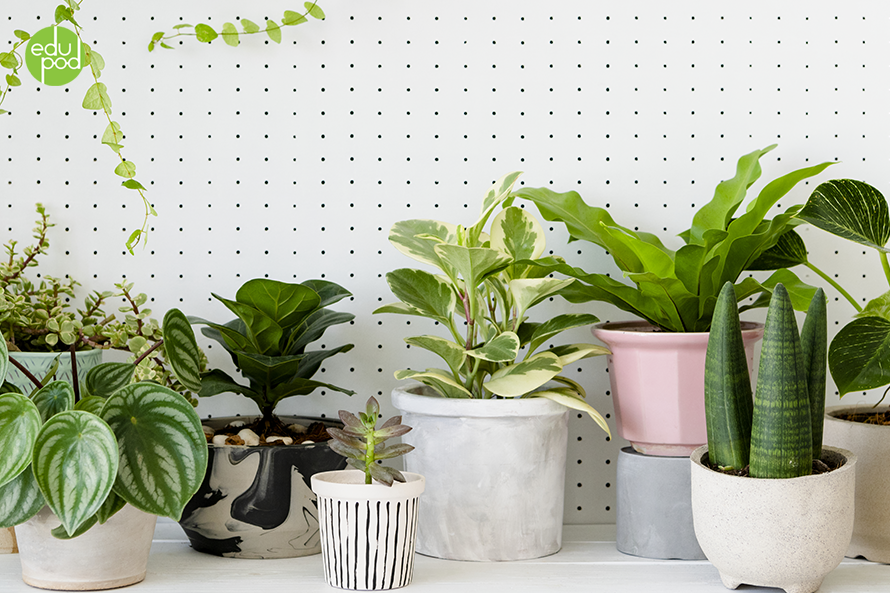
Nature has an organic appeal well-loved by many. Its refreshing appearance and the multiple mental health benefits it’s said to bring is the reason adults love incorporating natural elements into interiors. It evokes feelings of peace and calm, and even has effects on children. Not only does it serve as a stimulant to inspire children, but nature can also develop children’s attention to detail. Additionally, frequent exposure to nature improves cognitive function, motor coordination, reduces stress levels, increases social interaction, and enhances social skills.
Designing Your Child’s Room
2.1. Shopping for your Child’s Furniture
With a better understanding of how interior design elements and the physical environment affects children development and wellbeing, it’s time to put the knowledge to good use. Want to transform your home or children’s bedroom into something more? Here are furniture shopping tips for a child-friendly home.
When searching for children’s furniture, there are several things to keep in mind. Children use the furniture for many activities and see their own space as their kingdom. It is important to know what your children want and balance it with functionality and safety.
-
Storage Space

Children have an enormous amount of belongings that include toys, learning materials, and personal items such as clothes. They do not have organisation skills and your home may end up with things strewn over the floor if your children are not taught how to take care of their belongings.
Always make sure that you get them enough storage cabinets to keep their things neat and tidy. But avoid getting too big of a piece of storage furniture that leaves no space for other essentials such as tables, stools, and empty floor space for play. If space constraint is an issue, you can opt for multipurpose furniture such as storage beds.
-
Storage Space
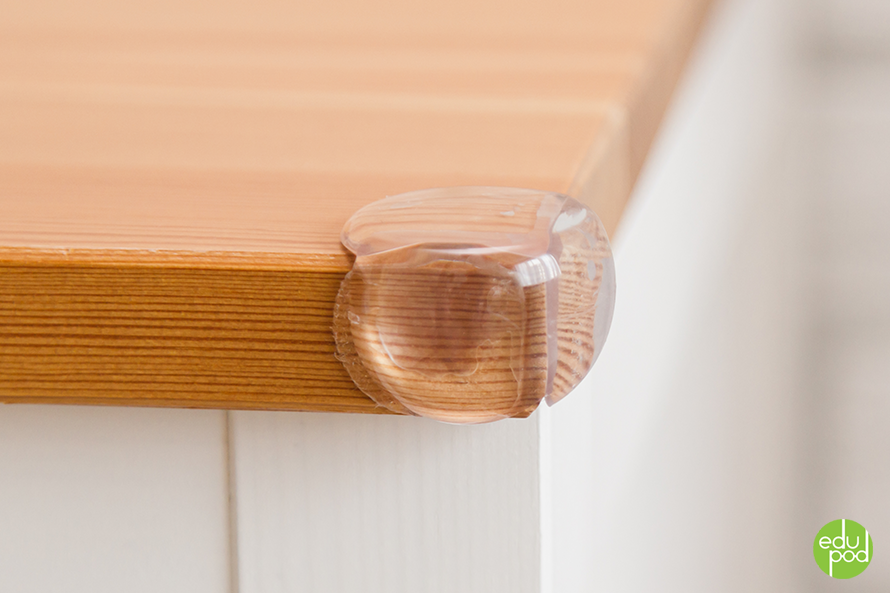
The safety of your children should be your top priority when choosing furniture. This is because they use their furniture for playing, occasionally jumping over and running around. There are a few key design considerations to look out for:
-
Style of Furniture and Children’s Personal Preference
Take into consideration your children’s personal preferences, but also keep in mind that children can be very fickle-minded and change their minds by the next year. Unless necessary, parents should stick to buying furniture that is of standard design, only changing things such as colour and arrangement when the need arises.
Learn More: 3 Tips For Choosing Furniture Your Child Will Love
-
Functionality
Every piece of children’s furniture you place in your kid’s environment should have its own function and purpose, whether it is to stimulate their senses or to provide them with a comfortable space to play, learn, and live. Do not buy pieces of furniture simply for aesthetic purposes, but factor in how the design elements will eventually complement your children’s lifestyle. For example, colourful desk and chair sets are great at sparking their imagination during learning sessions.
2.2. Children’s Room Essentials
Are you wondering what you should put in your children’s room? Here are some kid's room essentials to make your child feel comfortable.
-
Framed Photos
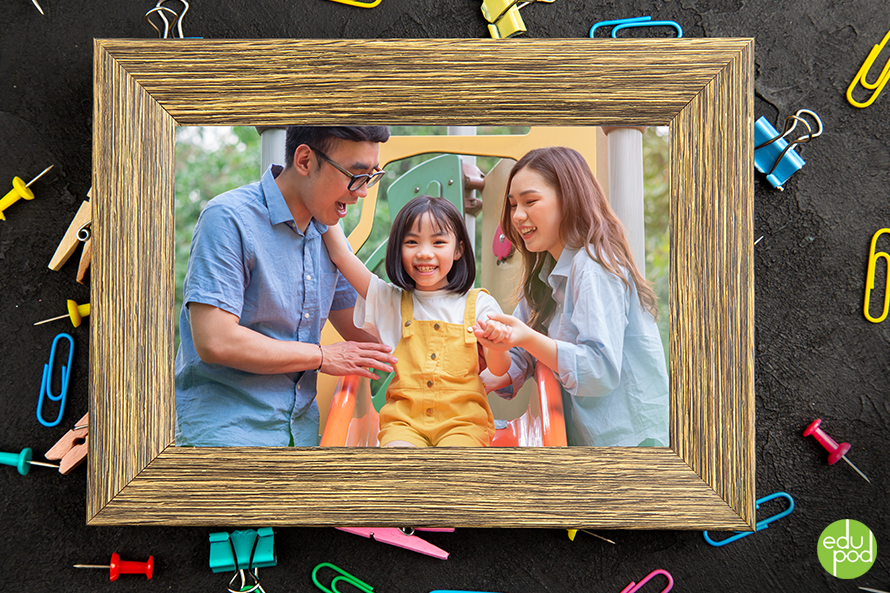
Framed pictures of loved ones hung around the room create a loving and warm atmosphere for children, giving them a sense of safety and security as they are accompanied by things and faces they are familiar with. These photos also develop their sense of self-esteem and identity.
-
Brightly Coloured Art
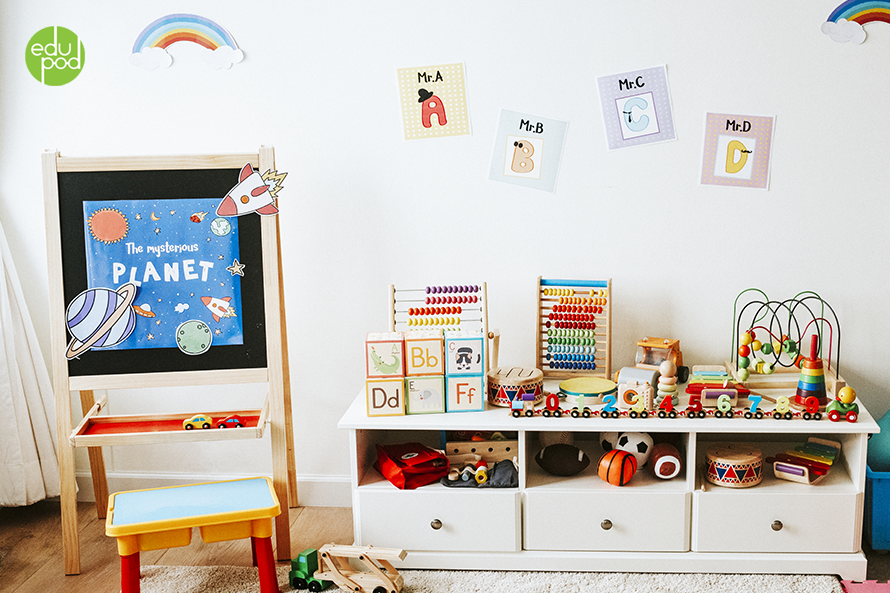
Lively art pieces with unique patterns and interesting colour combinations make children’s rooms feel inviting and fun. They can be incorporated into the interior through murals, paintings, wallpapers, and more. One way to enhance their living space is to take inspiration from their favourite superheroes, animated movies, or favourite hobbies. For example, a princess themed room, a space filled with elements related to superman or a sport they enjoy.
-
Desk Area
A desk area is essential in a children’s room because it serves as the place where your children can learn, complete learning exercises or play with small toys and games.
-
Comfortable Sleeping Area

Sleep is vital to children’s development as well. Hence, a good quality bed is a must have in your children’s room. It provides them comfort and allows them to get a quality sleep at night.
-
Plenty of Storage
Storage and organisation is extremely important for families with children. The best way to ensure that they’re not tripping over toys or getting frustrated over not being able to find their things is to give them plenty of storage space that they can easily access. Important items to get include shoe racks, storage bins for toys, and cabinets.
-
Reading Light
As mentioned above, lighting is important in children’s rooms as it not only affects their eyesight, but also their emotional development and ability to learn. To ensure that their room is always well lit, especially during learning times, install a reading light near their desk to provide a light source when they need it.
-
Analogue Clock
Having an analogue clock in your children’s room teaches them how to tell time and makes it easier for them to manage their own schedule. Digital clocks don’t indicate the passage of time and can be difficult for children to get a good grasp of the concept of time. With analogue clocks, they can easily tell time and understand how much time they have left till the next activity or task.
-
Play Area
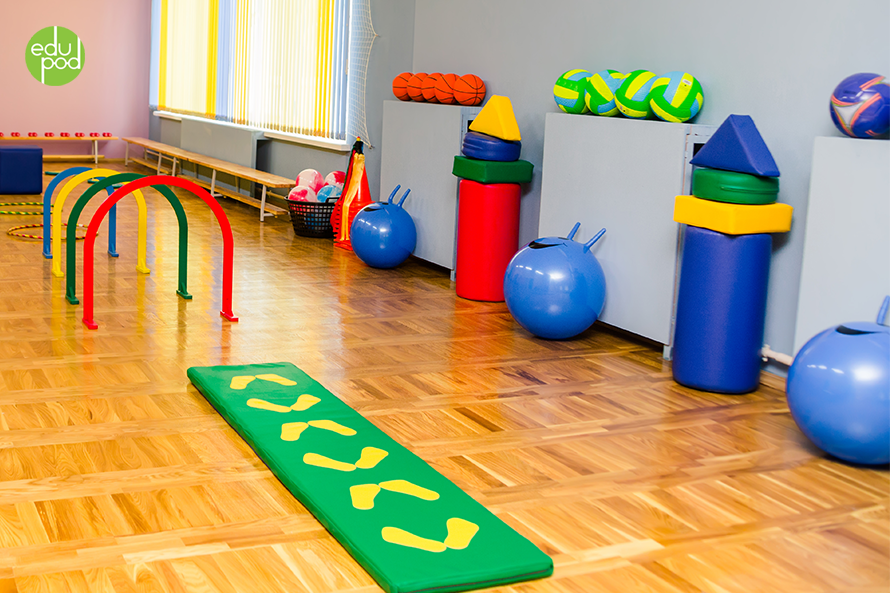
Many parents don’t want their children to engage in too much play time. However, play sessions are crucial to children’s growth and development. Building your own home playground and allowing your children to engage in play boasts a few benefits. They include increased self-esteem, improved collaboration skills, critical thinking skills, attention spans, motor skills, and even strengthens their immune system. Positive play impacts children in all aspects and parents should provide children with a play environment that allows them to have fun and learn.
Learn More: Benefits of Play
Frequently Asked Questions About Children’s Furniture and Child-Friendly Interiors
Why is Child-Sized Furniture Important:
Furniture designed to fit children allows them to engage in their environment easily without assistance from an adult. It is also safer as it does not require climbing or jumping to reach or get down from any furniture.
Is Plastic Furniture Safe for Children?
Plastic furniture is affordable, lightweight, and easy to clean. However, some of them are loaded with toxic chemicals that harm human health and the environment. Some plastics such as polypropylene plastic are generally safe for use.
How Can I Make My Child’s Room Safer?
Test out or conduct research on all materials before buying them and avoid getting furniture with sharp edges. There are also safety accessories that you can get to cover up surfaces in your home. They include things such as child-safe mirrors, ribbed pillar wall guards, foam mats, corner guards, finger alert door stoppers, and anti-slip tapes.
How Do I Give My Children Their Own Space in a Shared Room?
The ideal method is to give each child their own bed space and floor space in two parts of the room, it could be separated by cabinets or shelves, or by the colour of the mat on the floor. If the room is small, a bunk bed will work in giving them a private bed space while you give them separate play or study areas in other parts of the house.
Why are STEM Kits Important?
STEM kits are excellent tools that introduce your children to the fundamentals of science, technology, engineering, and mathematics, and it is a good way to nurture your children’s natural curiosity while making learning fun.
Now that you’re acquainted with child furniture design, how to make your home child-friendly, and how interior design affects children, it’s time to build the space most ideal for your kids.
Edupod is a leading children’s furniture store in Singapore designing, supplying and distributing a variety of furniture, home playground equipment, protection accessories, and locks to be used in residential units and early childhood institutions. All our furniture conform to safety requirements and regulations of the SPARK accreditation framework and we pride ourselves on the amazing quality of our products. Discover a range of kids furniture here.













